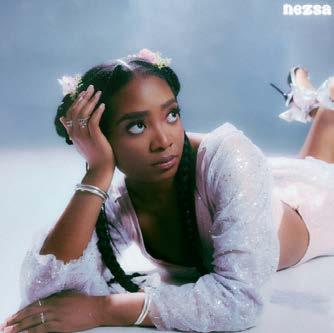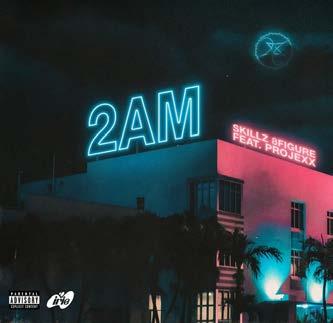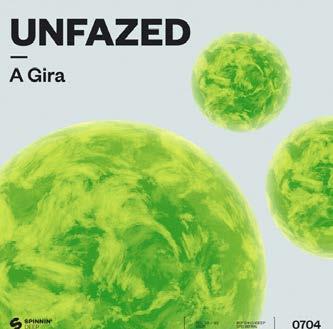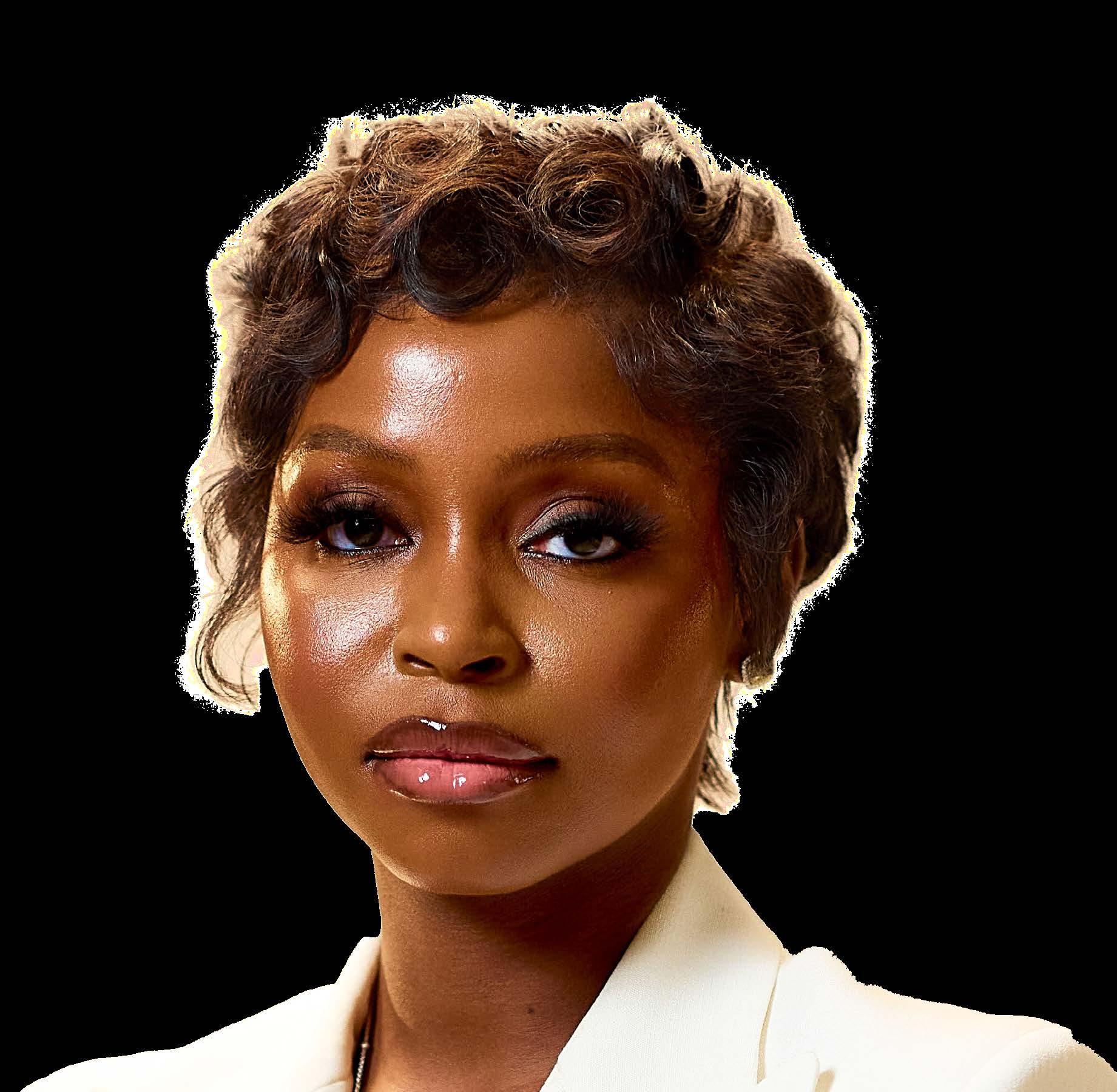
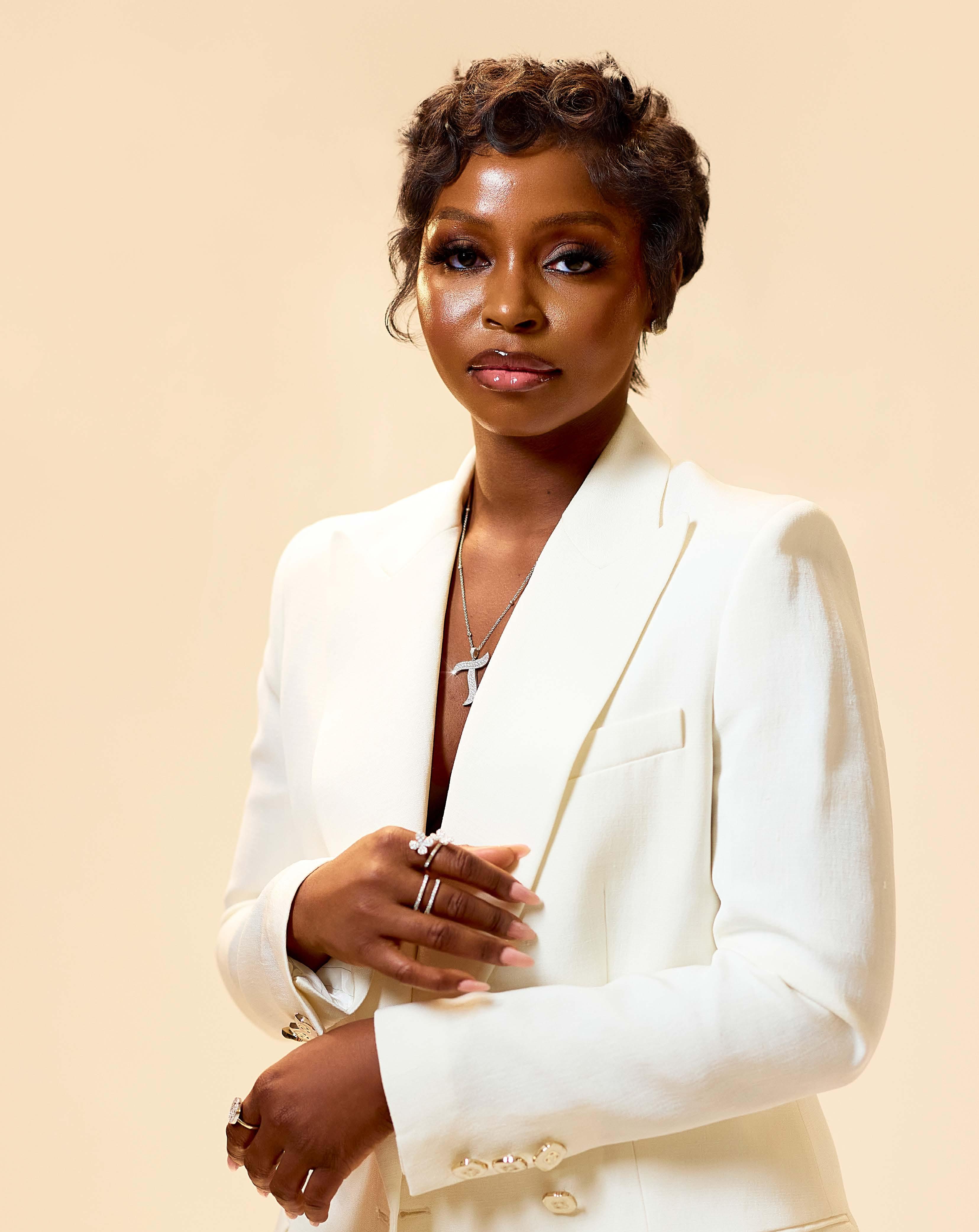










SPhoto: Kola Oshalusi @insignamedia Makeup: Zaron
andrah Tubobereni wasn’t always in the fashion business; before launching her brand, TUBỌ, she started her career in business development in corporate Nigeria. Her time in the corporate industry taught her that creativity is only sustainable when it is backed by structure and strategy. She learnt to approach design with the same discipline she applied to business. In designing, Tubobereni doesn’t just think about how the dress will look but how it will move through the world, who it will speak to and how it will live up to the brand’s promise.
With sustainability being a key conversation in fashion, TUBỌ is integrating eco-conscious practices without compromising on quality and luxury by designing with longevity in mind. Her pieces can be worn and passed down instead of being discarded after one season.
With fashion season just around the corner, Tubobereni is poised to debut a new collection at Lagos Fashion Week this year. As for what to expect from her designs, I’ll let you read that on pages 8 to 10 of this issue.
For the night owls, we have something for you on page 13: cities that don’t sleep. If you’re planning a trip soon, we have listed some cities with a vibrant nightlife. Scroll on to read and take your pick.
When our movie reviewer asked if I am a fan of horror movies, my immediate answer was, “Certainly not,” to which he excitedly went on to disclose that this week’s main movie review is a horror story and that it was his highest score, so far. So, for all those who like horror movies, Weapons is a must-watch.
Until next week, enjoy your read.


AUSTYN OGANNAH PUBLISHER/EDITOR-IN-CHIEF
Executive Editor: Onah Nwachukwu @onahluciaa
Writer: Johnson Chukwueke
Design & Layout: Olaniyan John ‘Blake’
Digital Media: Oladimeji Balogun
Consulting Art Director: Sunny Hughes ‘SunZA’
www.thewilldowntown.com


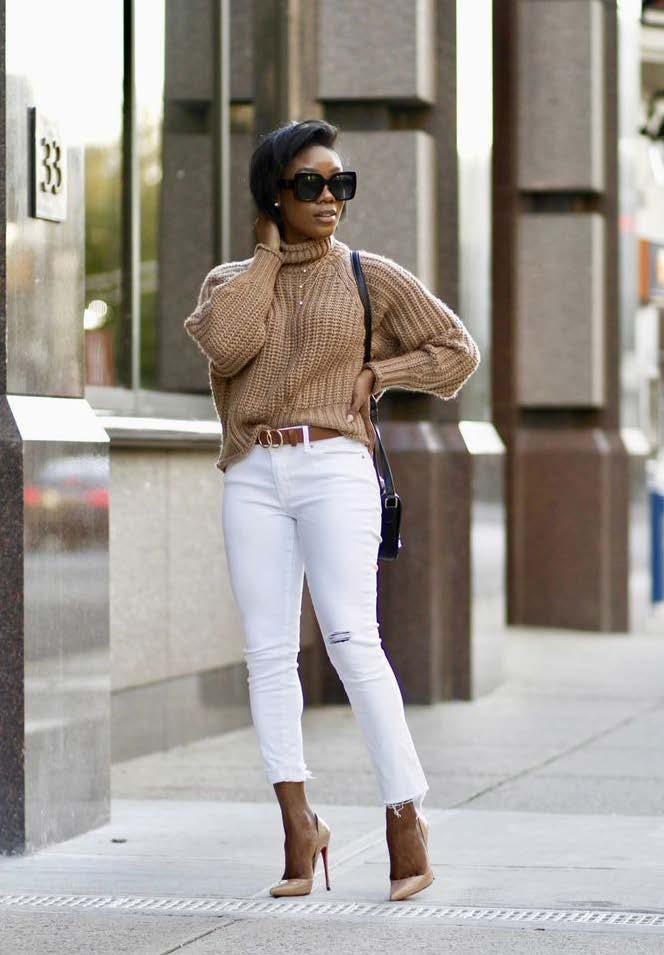
07 6 Stylish Ways to Wear White Jeans
12
13 04-05 FASHION #UNSHAKABLE TRUTHS BEAUTY
Untold Truths The Woman Who Wore a Smile
8-10
TRAVEL
14 REVIEW DOWNTOWN CONFIDENTIAL COVER The Sandrah Tubobereni Story
15
16
Best Cities to Explore After Dark A Night Owl’s Guide How to Nail a Manicure With Mismatched Colours

Boluwatife Adesina @bolugramm
- Contributing Writer


Closer Than Before
Weapons




Boluwatife Adesina is a media writer and the helmer of the Downtown Review page. He’s probably in a cinema near you.
Virgo Season The Perfectionists With a Purpose DOWNTOWN ZODIAC @ericogaga





Dorcas Akintoye @mila_dfa_ - Contributing Writer
Dorcas Akintoye is a dedicated writer with more than 2 years prolific experience in writing articles ranging from food, entertainment, fashion and beauty. She has a National Diploma in Mass Communication from Kwara State Polytechnic, Ilorin. She loves writing, listening to music and playing scrabble. She is a highly-skilled, enthusiastic, selfmotivated professional writer.
Sally Chiwuzie @unshakable.is.a.state.of.mind - Contributing Writer
Sally Chiwuzie is a non-practising barrister who owns the brand #Unshakable. She is the author of Silent Symphonies, a fictional love story, and the creator of the podcast Chronicles of #Unshakable Truths.
@habeeb_lala1 @merita_baby Efe himself Cut soap for me
BY DORCAS AKINTOYE
White jeans are one of the most underrated fashion staples. They’re fresh and can be styled in so many ways, but many people shy away from them because they can be tricky to wear. What many don’t know is that white jeans are more versatile. Whether you’re going for a casual, classy, or bold look, you can easily build your outfit around a good pair of white jeans. In this article, we will show you how to rock white jeans with style and confidence.
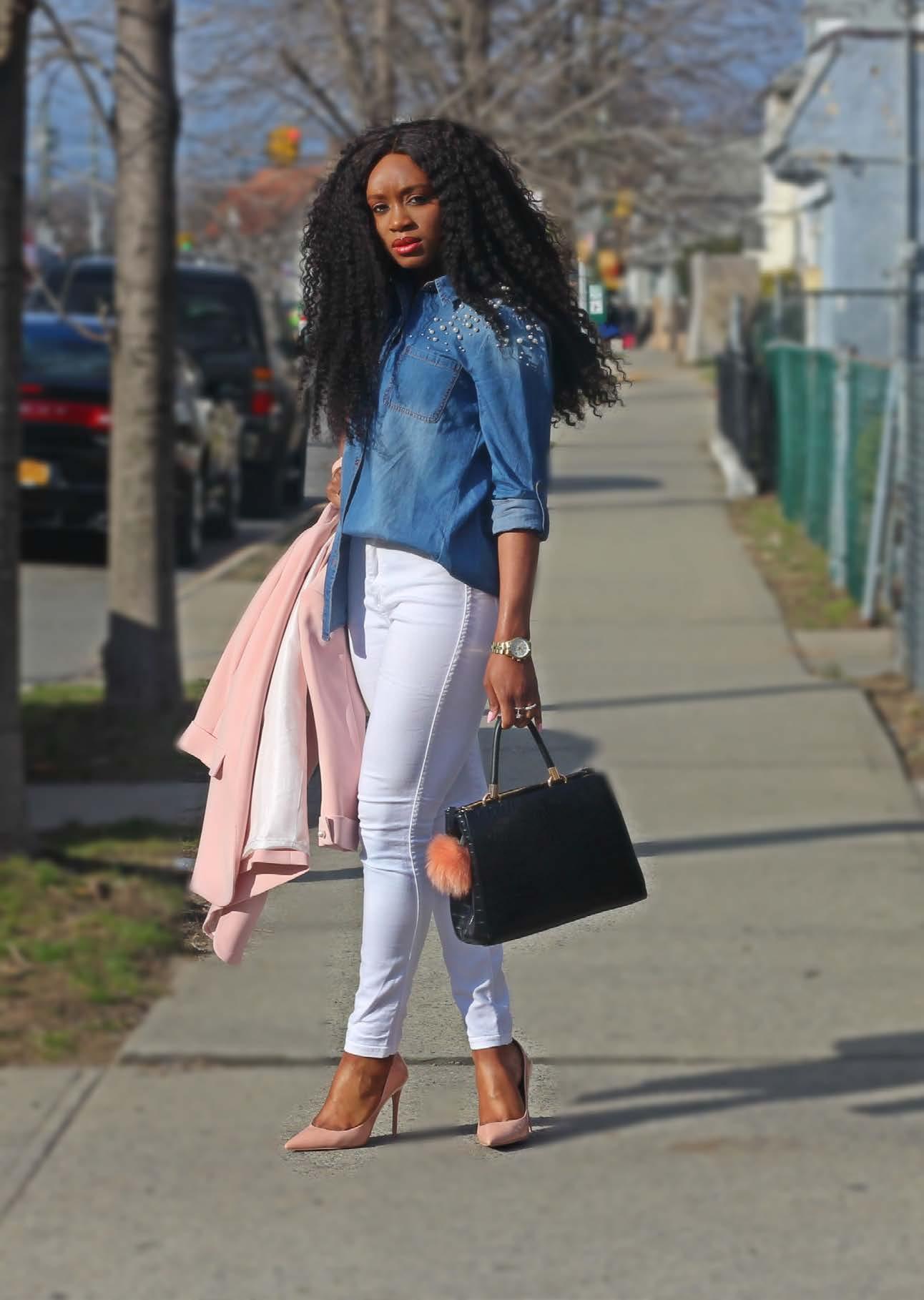
Pairing white jeans with a denim shirt is a simple way to look put together without trying too hard. The contrast between the crisp white and the soft blue denim creates a balanced, laid-back look. You can tuck in the shirt fully for a neater appearance or do a front-tuck to keep things casual. Add a pair of white sneakers or flat sandals and you’re good to go.
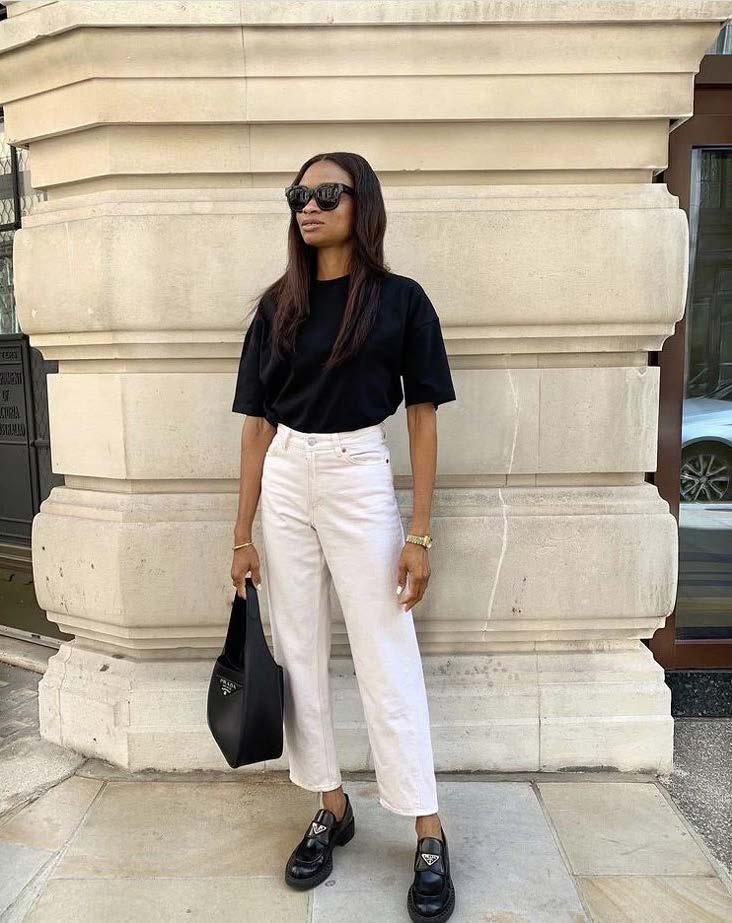
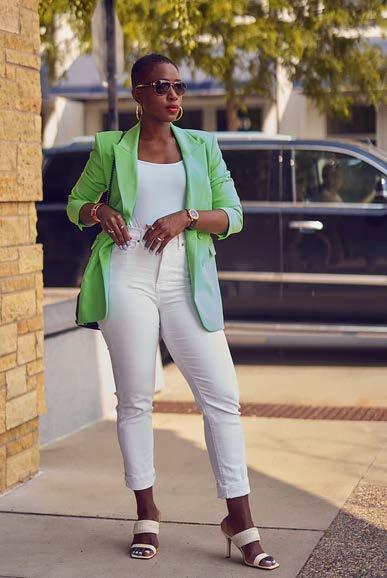
Do you want to look classy and sharp without wearing traditional trousers? Throw on a fitted blazer over a simple top and pair it with your white jeans. Add heels and a structured handbag for that polished, put-together vibe. This look is great for meetings, dinner dates, or anytime you want to make a stylish statement.
White jeans don’t always have to look “serious.” You can easily give them a fun, edgy twist by pairing them with a bold graphic tee. This is a street style go-to that’s youthful and full of personality.
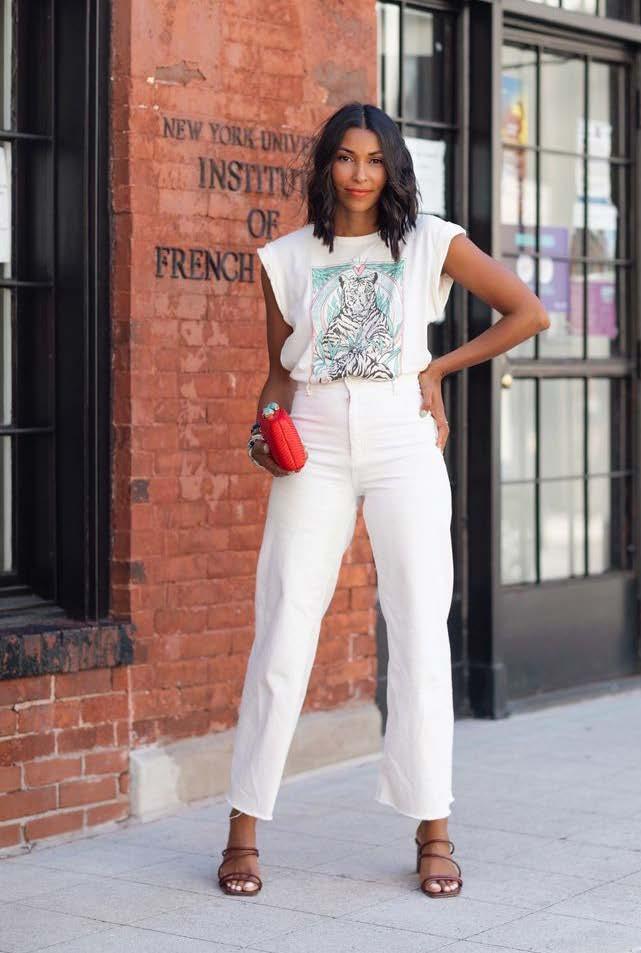
One of the best things about white jeans is that they allow your top to stand out. If you love colours like mustard yellow, coral, teal, or fuchsia, this is your time to shine. A boldcoloured blouse or top on white jeans will pop beautifully. It’s an easy way to wear colour without going overboard.

During the cooler days, pair your white jeans with a beige, grey, or cream knit sweater. It gives a clean and calm aesthetic, especially when the tones are kept neutral and warm. Complete the outfit with ankle boots or loafers for that

Wearing white jeans with a white top gives you that fresh, clean, and elegant monochrome look. It’s minimal, but when done right, it’s extremely stylish and attentiongrabbing. This is perfect for events, special outings, or days when you want to look sharp without doing too much. Add gold jewellery, a nude or metallic bag, and heels or white mules to finish it off.
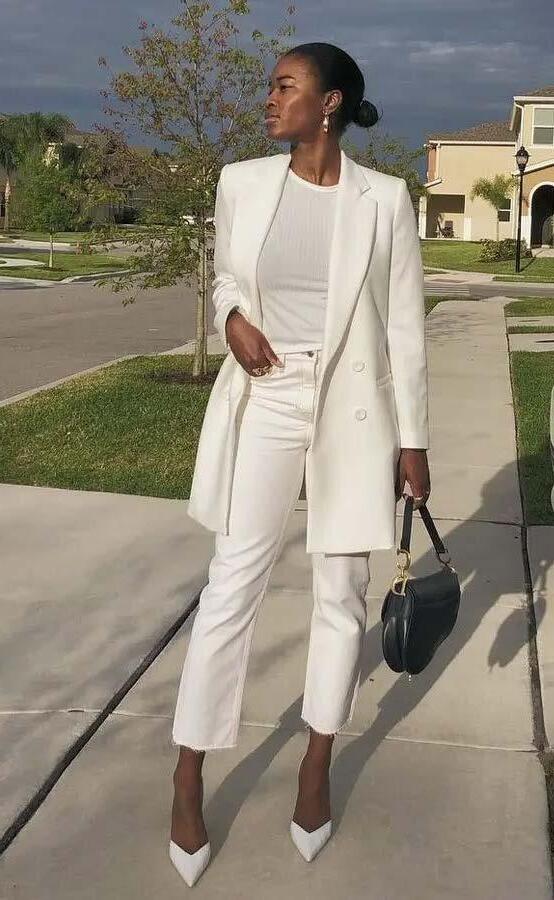
White jeans can work for any season, mood, or occasion; it all depends on how you style them. Whether you like to keep things simple or you enjoy standing out, there’s always a way to make white jeans work for you.


SALLY CHIWUZIE @unshakable.is.a.state.of.mind
Everyone thought she had it all. The marriage, the children, the dinners, the laughter that could fill any room. She was the woman people turned to for advice, the one who held friendships together, the extrovert with a magnetic smile. But behind closed doors, her truth was different.
She grew up in a world where marriages were meant to survive at all costs. Where leaving was a scarlet letter, where divorce was whispered about as failure, where a “Christian woman” was measured not by her joy but by her endurance. Her marriage wasn’t just a covenant; it was her crown. It gave her pride, purpose, and relevance. When she spoke, people listened — because she spoke from the moral high ground of “sanctity.”
And yet, her body told another story. She longed for passion. For the kind of love her friends whispered about on girls’ trips — messy, thrilling, alive. She envied their stories of cunnilingus and dirty sex dressed in clean sheets, of passion burning in places she had only ever dreamed of. She had a gorgeous figure but hid it, unused, under-praised, untouched.
Every day, she poured herself into her marriage. Every day, she was met with silence. The fire never came. She suspected he had affairs. She didn’t care enough to confront him — except for the quiet jealousy that he could move freely in a society that would have tied her to a tree and stoned her if she did the same.
So she lived in secret torture.
The woman who fed the family, kissed her husband, ran her miles, went to work, made everyone laugh, and carried her pain like a shadow.
Her friends adored her. Men admired her. Some of those men sensed her hunger — they flirted, sometimes even leaned close enough to touch the edge of her longing. Each time, she bolted. She would cut them off, chastise them, even run for the hills. It was safer to suffocate her desires than to ever give in. Safer to be admired than consumed. And so she became the woman who was everything to
everyone — except to herself. At 49, cancer came. But was it cancer, or was it darkness? Was it a body that had grown tired of carrying secrets, or a soul too weary to keep pretending? Maybe it was all of these. Maybe her illness was simply the last silence she could no longer fight. In her last days, she apologised to God. Not for sin — but for silence. For not being all she could have been. For hiding her light in the name of perception. She had lived a life with a big smile on her face, but with a heart that had never been allowed to burn. And so she prayed one final prayer:
“Dear Lord, I didn’t get the chance. Please let my daughter be brave and live this for me. Forgive me and let me watch her from heaven if you would have me. May I be her guardian angel. Amen.” She slipped away with that prayer on her lips. Content enough — but not complete. Her untold truth lingers, echoing louder than the applause of public perception: how many of us are smiling through the pain, living halflives because of what society thinks? How many women are praised for their endurance, while their joy

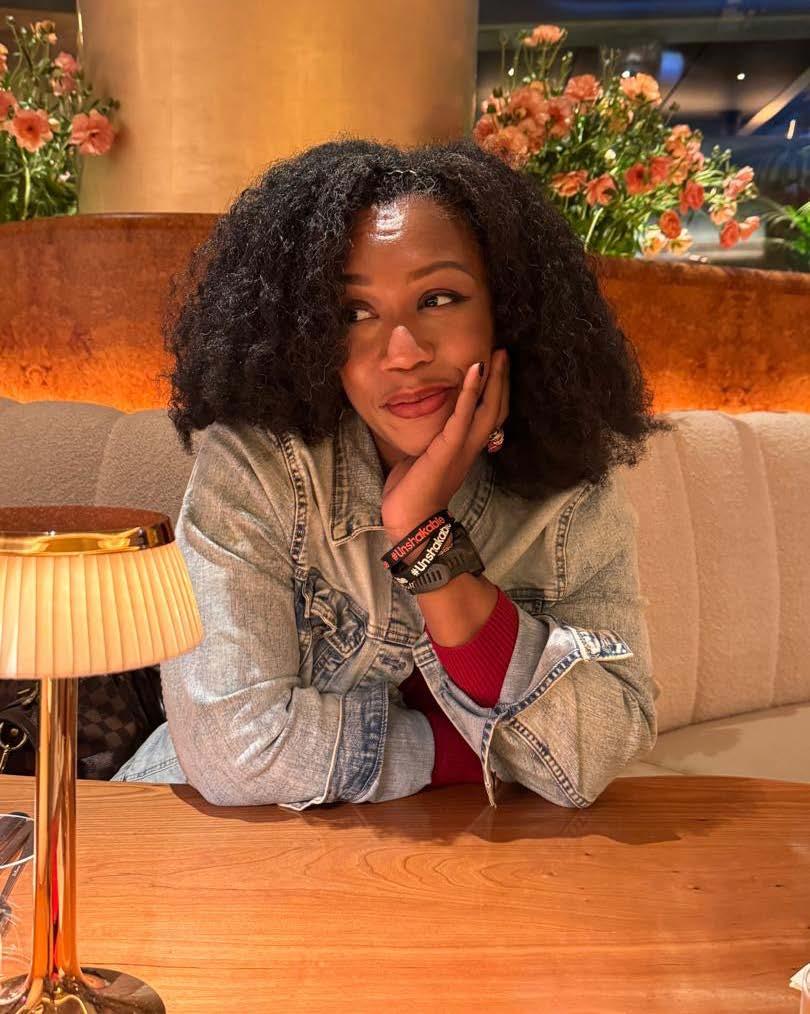
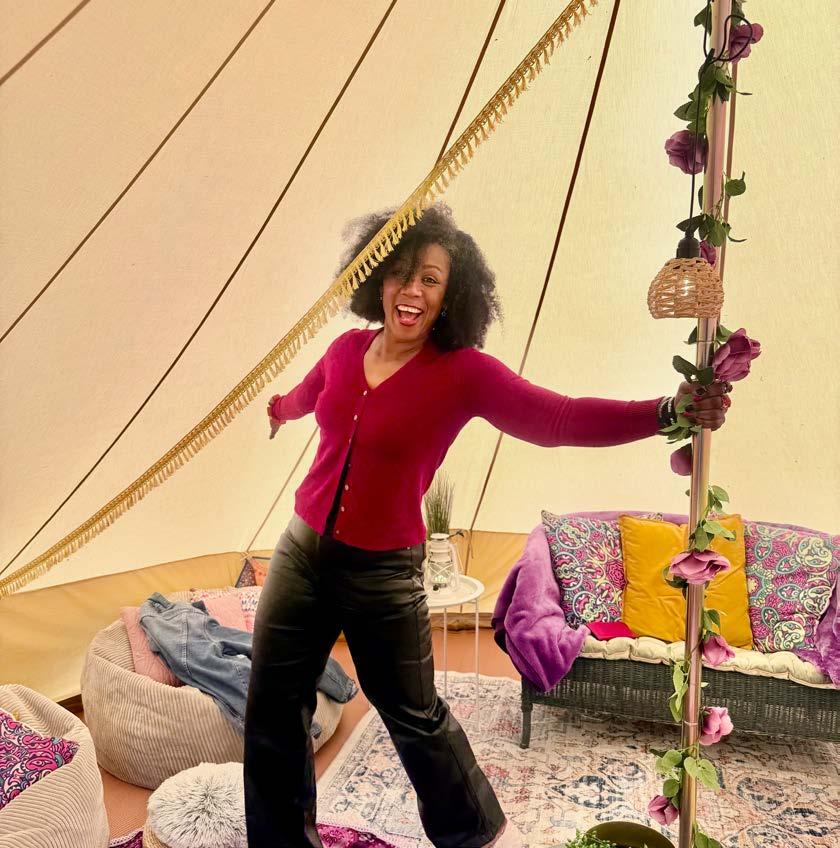
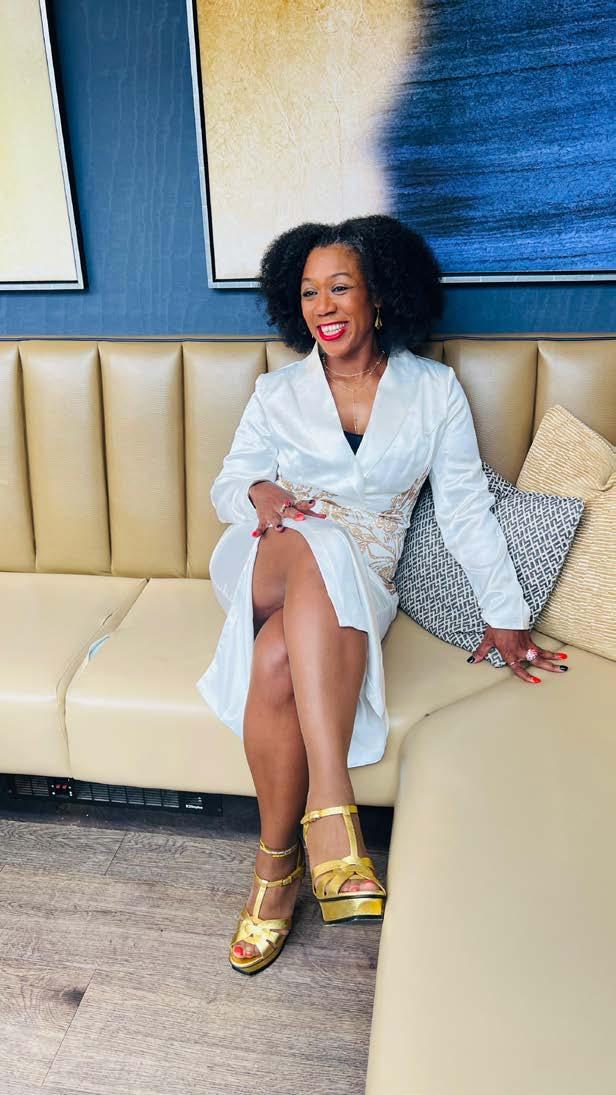
withers quietly in the shadows? She wore her smile until the end. But her story — now told — reminds us that endurance without joy is not the victory we imagine. That the soul withers when love is replaced by performance. That the bravest act we can sometimes commit is to live fully, shamelessly, passionately — while we are still here. Her daughter carries her legacy now. Perhaps she will live the prayers her mother could not. Perhaps she will be unafraid to ask for passion, to embrace desire, to speak truth without shame. Perhaps she will be brave enough to live, not just endure.
Because every untold truth, when finally spoken, becomes a mirror. And in its reflection, we are asked the same question: what truth am I hiding behind my smile?
And perhaps this is the #Unshakable lesson here: that real strength is not in surviving perceptions, but in daring to live authentically, even when the world expects you to stay silent. ‘See’ you next week.

Fashionhas always been more than fabric and stitches; it is one of the purest forms of creativity. For so long, visionary designers have used clothes as a canvas to tell stories, challenge norms, and pioneer change. Creativity in fashion is not just about beauty, but about expression, about translating emotions, heritage, and bold ideas into something the world can wear.
For Sandrah Tubobereni, creativity goes beyond sketches and runway moments; it is only sustainable when backed by structure and strategy. With her brand TUBỌ, founded in 2014, she has been intentional about positioning it as more than just a clothing label. TUBỌ is a celebration of women in their fullness, honouring both their strength and softness, their elegance and power. Each of her designs reflects her belief that every woman should feel like the main character in her own story. Through discipline, vision, and intentionality, Tubobereni has built her clothing brand into one of Africa’s most admired luxury fashion houses.
In this interview with THEWILL DOWNTOWN’s Dorcas Akintoye, Sandrah Tubobereni opens up about her journey from business development to fashion, the philosophy behind TUBỌ, her thoughts on sustainability, and her vision for African fashion on the global stage.
You started your career in business development before venturing into fashion. How has your corporate background shaped your approach as a Creative Director at TUBỌ?
Yes, I worked in business development, project management and finance roles for four years in the banking sector as well as in empowerment organisations.
“I see my
I got firsthand experience in understanding structure and strategy - two key elements that have helped my approach to business and my brand identity. My corporate background taught me that creativity is only sustainable when it’s backed by structure and strategy. I learned to approach design with the same discipline I applied to business, understanding the numbers, the systems, and the people behind every decision. At TUBỌ, I don’t just think about what a dress will look like, I think about how it will move through the world, who it will speak to, and how it will live up to the brand promise. That blend of structure and artistry has shaped every collection and every client experience we’ve built.
TUBỌ has carved a distinct identity in the luxury market. From a brand strategist’s perspective, what intentional steps have you taken to position TUBỌ as more than just a clothing label?
“
From the beginning, TUBỌ has been about honouring the woman’s form in all its strength and softness. Every design begins with her in mind, her curves, her posture, the way she moves and feels in her own skin. We are intentional about creating silhouettes that celebrate rather than conceal, pieces that fit the woman instead of asking her to fit them.
Sustainability is becoming a key conversation in fashion. How is TUBỌ integrating eco-conscious practices without compromising on luxury and quality?
My corporate background taught me that creativity is only sustainable when it’s backed by structure and strategy. I learned to approach design with the same discipline I applied to business, understanding the numbers, the systems, and the people behind every decision.”
Beyond the garment, we have built an entire experience around her. It is the way we weave unique intricacies of a TUBỌ woman into her outfit, ensuring the uniqueness of each stitch, each thread, each design and each fabric. The fittings are personal, the storytelling is deliberate, and the craftsmanship is uncompromising. We draw from African heritage while speaking a contemporary, global language, making every collection both familiar and new. This clarity of vision means that TUBỌ is never just clothing; it is an extension of identity, a moment of power and presence she carries into every room.
You have three strong lines (TUBỌ WOMAN, TUBỌ BRIDE, and TUBỌ RTW). How do you approach storytelling differently for each line?
personal brand
as an extension of TUBỌ, not a separate entity. When I speak, collaborate,
or
appear
anywhere,
it reflects back
on the brand. But I also make sure that TUBỌ has
For TUBỌ BRIDE, it is about intimacy and legacy; every dress holds her culture, her love story, and her individuality in a way no one else’s can. For TUBỌ RTW, the focus is on ease and daily luxury, how she brings the TUBỌ attitude into her everyday life without waiting for a special occasion. Each line has its own rhythm, but all carry the same thread of craftsmanship, confidence, and a respect for her identity. For TUBỌ WOMAN, the storytelling is about presence; she is the main character in every room. A TUBỌ Woman transcends her outfit and represents confidence and strength in carriage. A TUBỌ Woman is not just the bride who has embodied our outfits or the everyday woman who has a readyto-wear, a TUBỌ Woman is a brand image because she has taken the time to allow us to tell of her strength, confidence and carriage through her unique outfit.
its own voice, its own platforms, and its own stories that live independently of me. That way, even when I step back, the brand continues to stand on its own.”
In building TUBỌ, what brand values have remained nonnegotiable for you over the years?
Precision. Craftsmanship. Authenticity. And a deep respect for the women we dress. We never compromise on fit or finish, and we never dilute the essence of the TUBỌ woman to chase trends. Every decision, from fabric selection to campaign styling, comes back to the question: Does this honour her? If the answer is no, it doesn’t leave the studio.
We design with longevity in mind. Our pieces are made to be worn, loved, and even passed down, not discarded after one season. We source fabrics thoughtfully, repurpose materials where possible, and produce in limited quantities to avoid waste. For me, sustainability is not only about the environment; it is about creating fashion that sustains its value, beauty, and relevance for years.
In your opinion, what role should African fashion brands play in leading sustainable innovation globally?
We have an opportunity to redefine what sustainability looks like by drawing from our heritage. In many African traditions, clothing was crafted with care, worn with pride, and valued as an heirloom. We can merge that mindset with modern innovation, using local craftsmanship, natural materials, and responsible production, to show the world that sustainability can be luxurious, culturally rooted, and globally relevant.
As someone who is deeply creative yet businesssavvy, how do you personally navigate moments when art and commerce seem to clash?
I remind myself that creativity without resources can’t reach its full potential, and commerce without creativity loses its soul. When those worlds clash, I go back to the purpose of the piece or the project. If it serves the woman we design for and stays true to the brand’s vision, I find a way to make it work financially. Sometimes that means adjusting timelines, scaling differently, or finding alternative ways to execute, but never at the cost of the brand’s integrity.
When you look back in five years, what legacy do you hope both Sandrah Tubobereni and TUBỌ will have left in the fashion world and beyond?
I want TUBỌ to be remembered as the brand that proved African luxury belongs on the global stage, not as a novelty, but as an equal. For myself, I hope my journey shows that you can lead with both faith and excellence, that you can create beauty without losing depth, and that you can build something timeless while staying true to your roots.
Your recent trip to Rome for the Phygital Sustainability Expo spotlighted TUBỌ on a global stage. What key insights or inspirations did you bring back from that experience, and how will they influence the brand?
I was excited to be a part of the Phygital Sustainability Expo that highlighted some considerations we adopt at TUBỌ to ensure sustainability and enhance good environmental practices. At that Expo, I highlighted the importance of fostering climate change by curbing textile waste. At TUBỌ, our practice and culture is resourcefulness and preservation - creating value from what others overlook. Our couture process, slow by design, embodies sustainability; this is why we do not mass produce. Every TUBỌ piece is crafted to order, built to last, and made with deep care. We’ve always had a practice of keeping production waste to a minimum, which is usually fabric offcuts that we then
repurpose into linings, accessories or community projects with young apprentices.
The Expo was a reminder that sustainability is not just a trend, it’s becoming the standard for global luxury. The conversations in Rome reinforced my belief that African brands must be part of that conversation from a place of strength, not catch-up. I came back more committed to telling the story of our processes, our craftsmanship, and our cultural heritage alongside our designs. It is no longer enough for a dress to be beautiful; it must also mean something.
TUBỌ is set to debut a new collection at Lagos Fashion Week this year. What can we expect from this showcase, and how does it reflect the brand’s evolution?
We cannot wait to show off some of the amazing designs we’ve been working on. You can expect a celebration of tradition and modernity in one breath. This collection draws from Nigerian wedding culture, reimagining it for a global audience without losing its soul. It is bolder in concept, more intricate in craftsmanship, and yet more accessible in how it can be worn. It is a statement on where we’ve come from, and a vision of where TUBỌ is going.
As the creative face of TUBỌ and a visible influencer in the fashion space, how do you balance personal brand building with maintaining TUBỌ’s distinct identity? I see my personal brand as an extension of TUBỌ, not a separate entity. When I speak, collaborate, or appear anywhere, it reflects back on the brand. But I also make sure that TUBỌ has its own voice, its own platforms, and its own stories that live independently of me. That way, even when I step back, the brand continues to stand on its own.
What message do you have for the TUBỌ WOMAN? You are the main character. You do not need permission to take up space, to be powerful and soft at the same time, to wear your heritage and your dreams with pride. Every stitch we sew is a reminder that you are worth the highest level of craftsmanship and care. Never forget that.
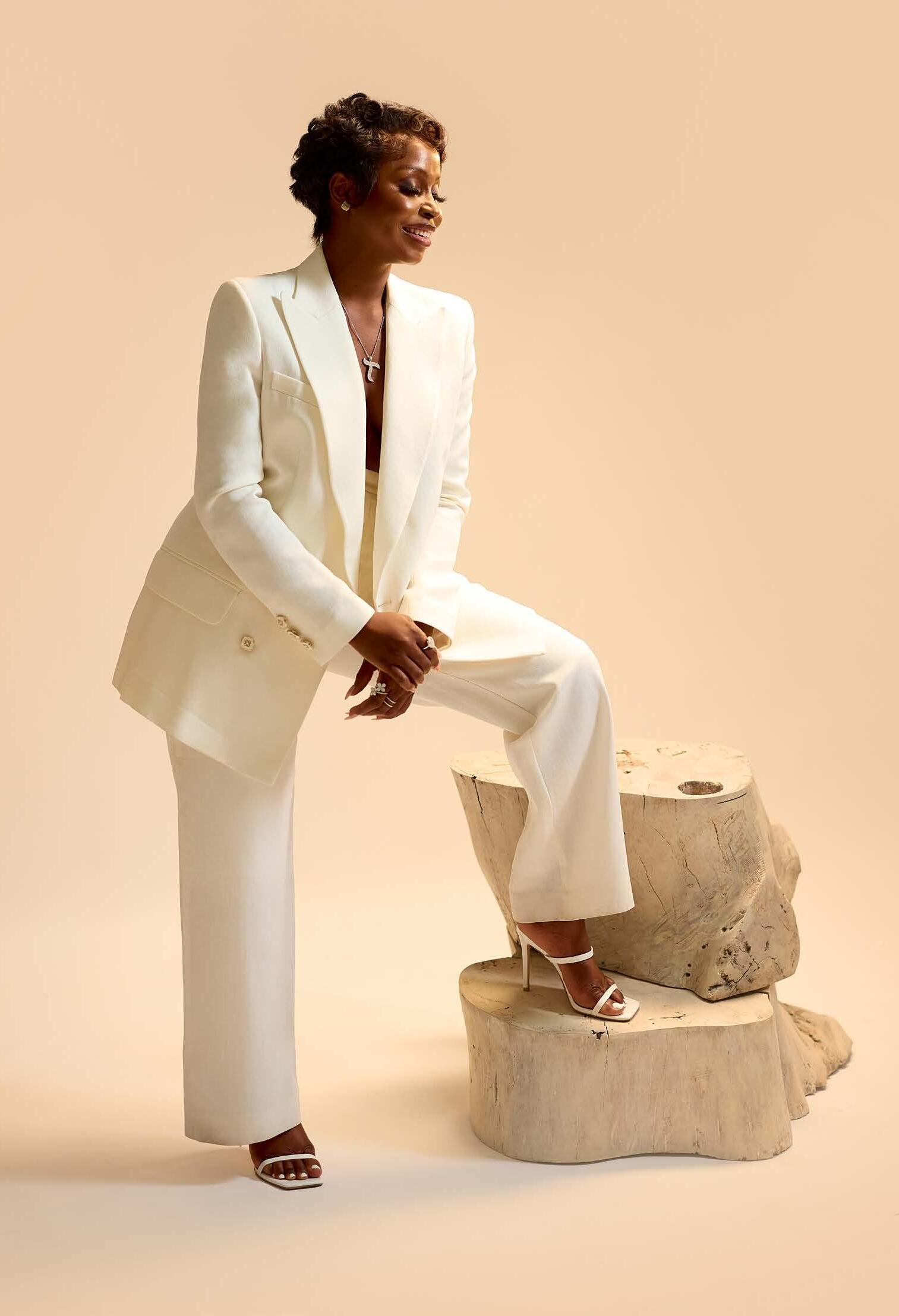
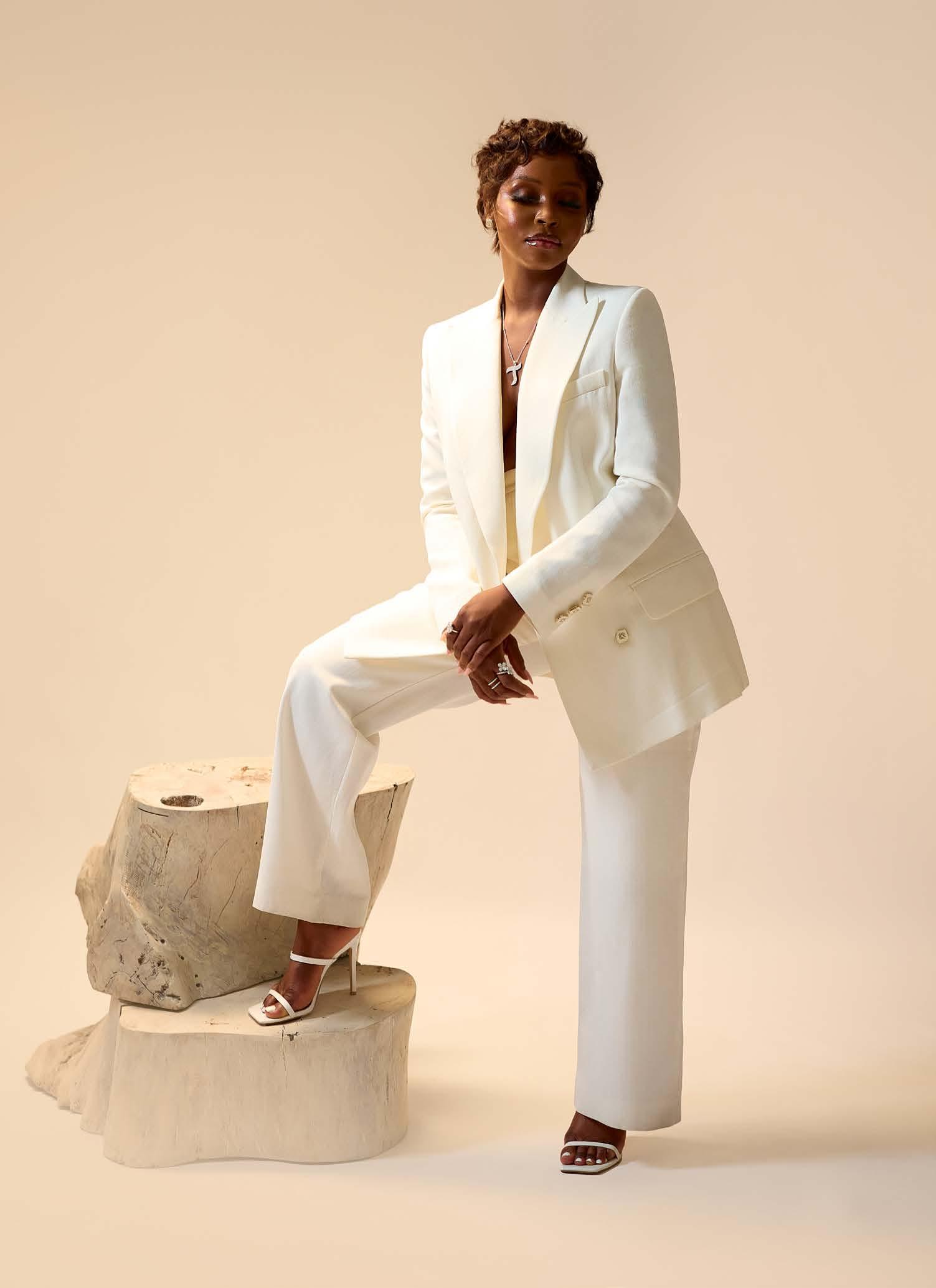
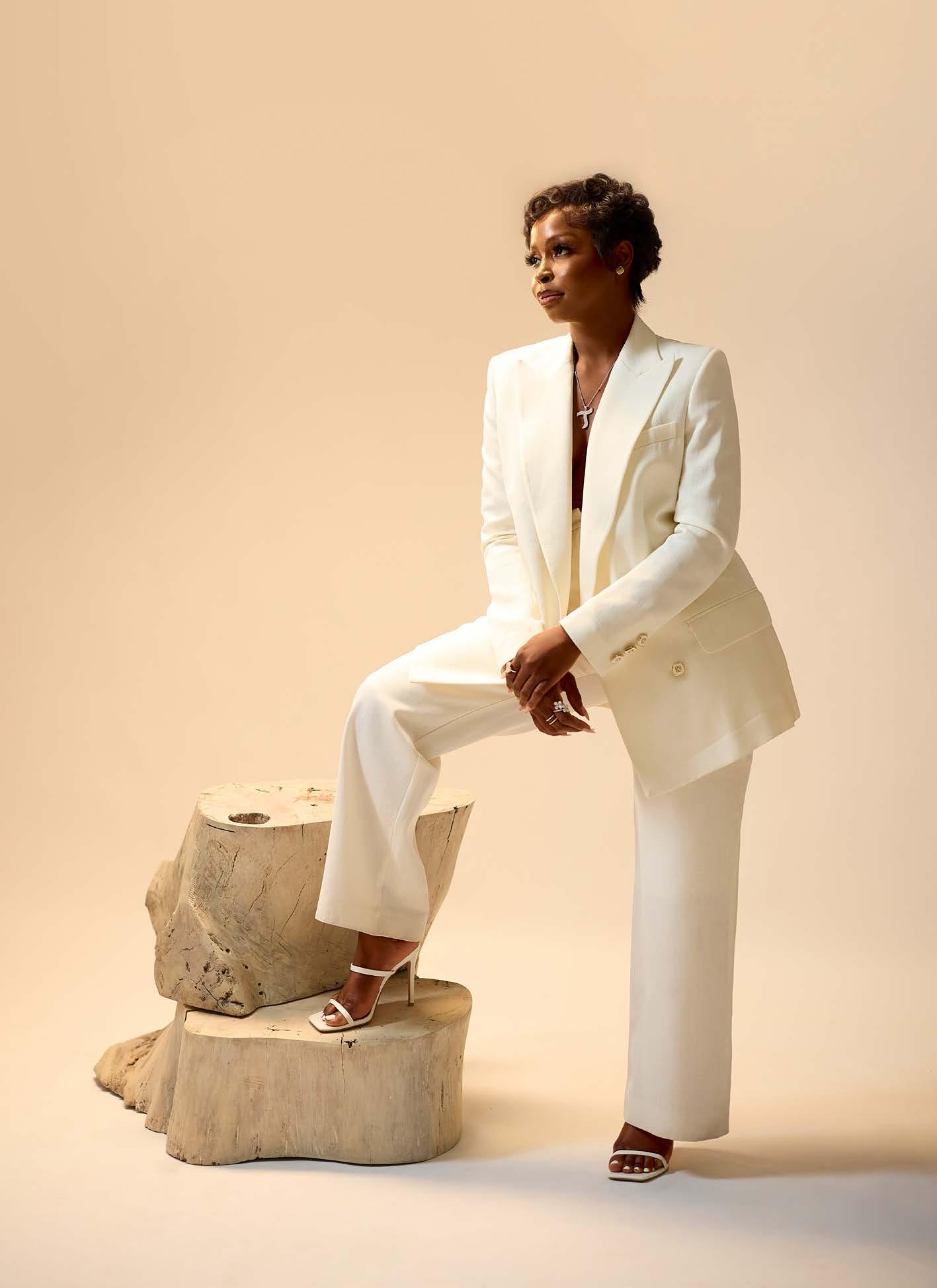


BY DORCAS AKINTOYE
Gone are the days when every nail had to match perfectly. Today, that rule is out the window, and mismatched manicures are totally in. Whether you’re going for a bold look or something fun and fresh, wearing different colours on your nails can make your hands look trendy and playful. But pulling it off isn’t always as easy as applying five random colours. You still need a bit of thought and balance to make it work. In this article, we will show you how to nail a mismatched manicure without looking like your polish got into a fight with your wardrobe.
When using different colours on each nail, it’s important to stick to a particular colour family or theme. This helps your nails look coordinated, even if no two are the same. For example, you can go with all pastel shades, earthy tones, neon brights, or nude variations. The idea is to ensure all the colours appear to belong in the same group. If you’re unsure what theme to go with, take inspiration from your outfit, or even your favourite eyeshadow palette.
If you want to include bold colours in your manicure, it’s a good idea to mix them with softer shades. This keeps your nails from looking too loud or overwhelming. For example, pairing a bright red with a muted pink or soft beige can make the manicure more balanced. It gives your eyes somewhere to rest and stops the colours from competing with each other.
USE A COMMON ELEMENT
Even if your colours are different, having a common element like the same finish (for example, all glossy, all matte, or all shimmery) ties everything together. When your nails share something in common, they look like they belong together, even if they’re rocking totally different shades.
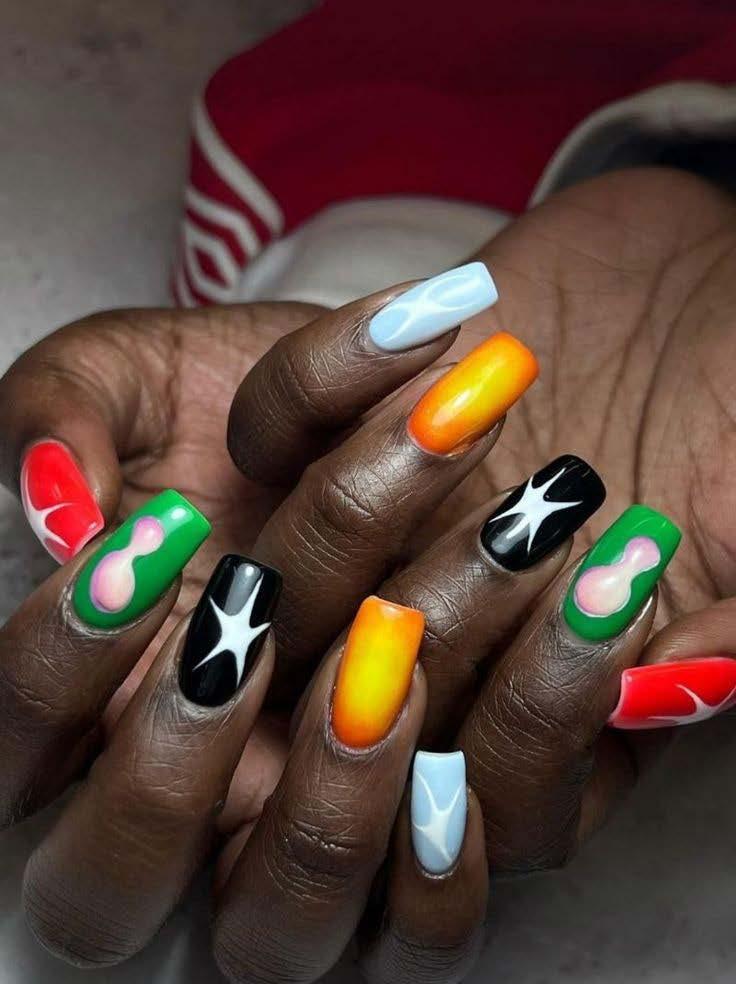


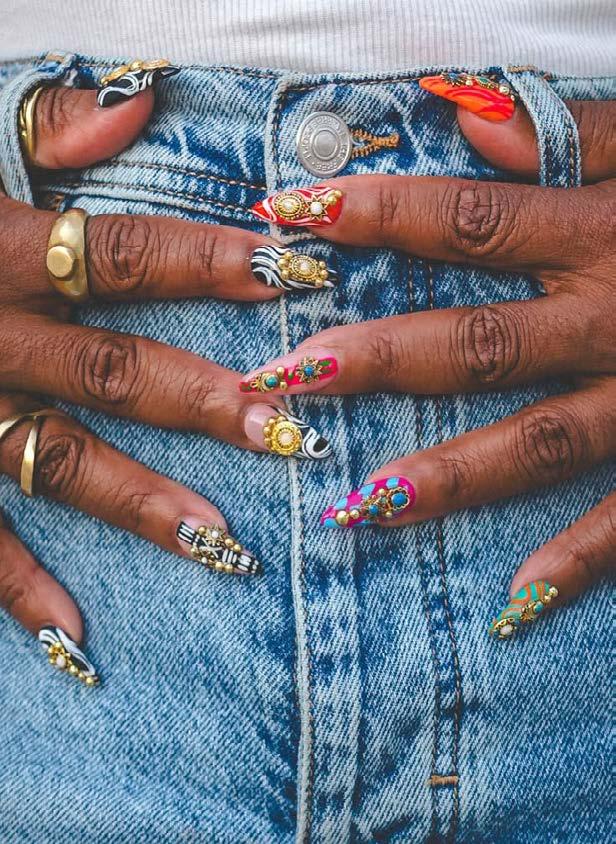


You can make your mismatched manicure even more fun by adding simple patterns or designs to one or two nails. This could be stripes, dots, swirls, or tiny stickers. You can also pick one nail (usually the ring finger or thumb) as your “accent nail” and make it stand out with a bolder colour or design. This helps guide the eye and makes your whole manicure feel intentional.
Before you start painting, it helps to test out the colours first. You can do this by placing dots of each polish on a piece of paper or nail wheel in the order you plan to apply them. This gives you a quick preview of how the colours look together. Sometimes, what looks good in the bottle might clash when placed next to each other on your hand. Planning helps you avoid mistakes and lets you switch things up before committing.
Experimenting with different nail colours offers an exciting opportunity to express your unique style and explore bold colour combinations. The trick is to ensure the colours appear to be different intentionally, not by accident. With the right balance, coordination, and a touch of creativity, you can achieve a mismatched manicure that looks polished and stylish.


Tokyo, Japan – The Neon Wonderland
If there’s one city that never dims, it’s Tokyo. The bustling streets of Shinjuku and Shibuya are a spectacle of colour, with giant billboards illuminating the skyline. Take a midnight stroll through Golden Gai, a maze of tiny bars with a retro charm, or experience the futuristic vibes of Robot Restaurant. Love gaming? The 24-hour arcades of Akihabara will keep you entertained till dawn.

Lagos transforms after dark into a hub of music, food, and culture. Victoria Island and Lekki are hotspots for elite lounges, while New Afrika Shrine, founded by Fela Kuti’s family, is a must-visit for live Afrobeat performances. If street food is your thing, grab a plate of suya from a roadside vendor while soaking in the city’s infectious energy.

Bangkok at night is a thrilling mix of bustling markets, rooftop bars, and vibrant nightlife. Explore the Chatuchak Night Market for unique shopping, enjoy drinks at the stunning Vertigo Sky Bar, or hop on a midnight boat ride along the Chao Phraya River to see the city’s temples glow under moonlight.

Barcelona’s nightlife is a mix of tradition and modern fun. Start your night with tapas and sangria at a cosy bar before heading to a flamenco show in El Born. By midnight, the city’s beach clubs like Opium and Pacha become hotspots for music lovers. Bonus: The Spanish don’t start partying until well past midnight, so pace yourself.
BY JOHNSON CHUKWUEKE
Some cities don’t sleep when the sun goes down; they come alive. Nightlife offers a whole different kind of experience and adventure for the wanderer who thrives after dusk. Whether you’re a party enthusiast, a culture seeker, or a quiet observer of city lights, the world’s most vibrant cities have something magical waiting for you after hours. In this travel guide, we will be taking you through some of the best destinations to explore at night, where the streets glow, the music plays, and the energy is electric.

New York City, USA – The City That Never Sleeps
From Broadway shows that start at 8 PM to rooftop lounges with breathtaking skyline views, New York City is a playground for night lovers. Wander through Times Square, grab a late-night bite at Katz’s Delicatessen, or dance till sunrise at Meatpacking District’s highenergy clubs. The Empire State Building even stays open late for dreamy night views.
Nightlife isn’t just about clubbing; it’s about discovering the heartbeat of a city when the crowds disappear and the atmosphere changes. It doesn’t matter which of these cities you are exploring; as long as you are a nocturnal person, there’s always an electrifying adventure waiting for every night owl. So, grab your camera, put on your most comfortable shoes, and step into the night. You never know what magic you’ll find.
AUGUST 23 RD - SEPTEMBER 22 ND

ELEMENT: EARTH
RULING PLANET: MERCURY SYMBOL: MAIDEN FLOWER: CHRYSANTHEMUM BIRTHSTONES: BLUE SAPPHIRE.
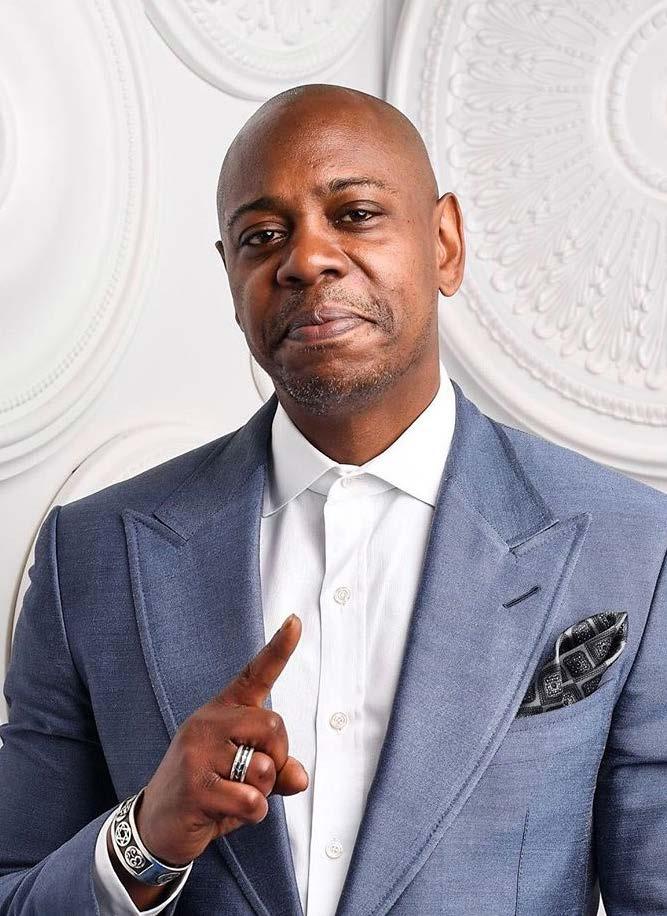
BY JOHNSON CHUKWUEKE
If you’ve ever met someone who seems to have life perfectly mapped out, lists neatly written, outfits effortlessly polished, and a knack for noticing the tiniest details, you may have encountered a Virgo. Born between August 23 and September 22, Virgos are the zodiac’s meticulous planners, blending brains with a quiet charm that makes them stand out without even trying. While they’re often known as the perfectionists of the zodiac, there’s much more beneath the surface of this earth sign ruled by Mercury.
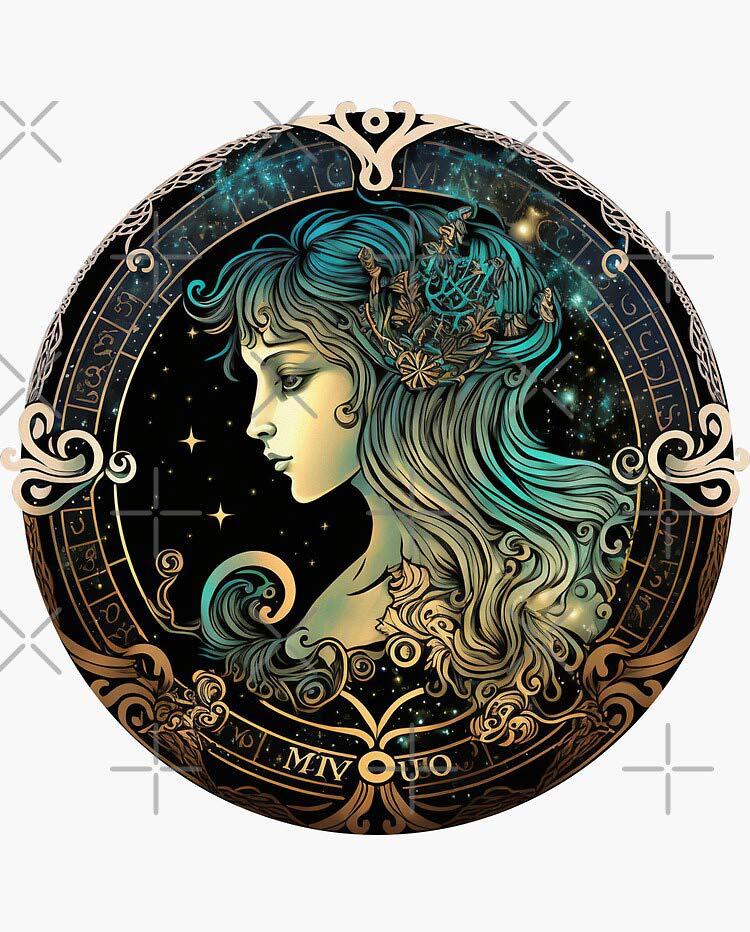
Attention to Detail
Virgos are natural analysts. Nothing gets past them, from a misplaced comma in a report to the subtle shift in a friend’s mood. This ability makes them reliable problem-solvers, both in their careers and personal lives. If you want something done right, hand it over to a Virgo.
Nurturing Nature
Despite their reputation for being critical, Virgos have an incredibly soft side. They love helping others, whether it’s offering practical advice, cooking up a wholesome meal, or lending a listening ear. Their nurturing spirit often makes them the quiet backbone of their relationships and communities.
Grounded And Practical
Virgos prefer logic over chaos. They thrive in organised environments and have an almost magical way of turning big dreams into actionable plans. While others may get lost in fantasy, Virgos stay grounded, working steadily toward results.
Virgos remind us that beauty lies in the details and that caring deeply, even in subtle ways, is its own superpower. They’re proof that practicality and compassion can coexist harmoniously. So, whether you’re lucky enough to be a Virgo or simply have one in your circle, know this: their influence brings order, balance, and a touch of quiet brilliance to the world.
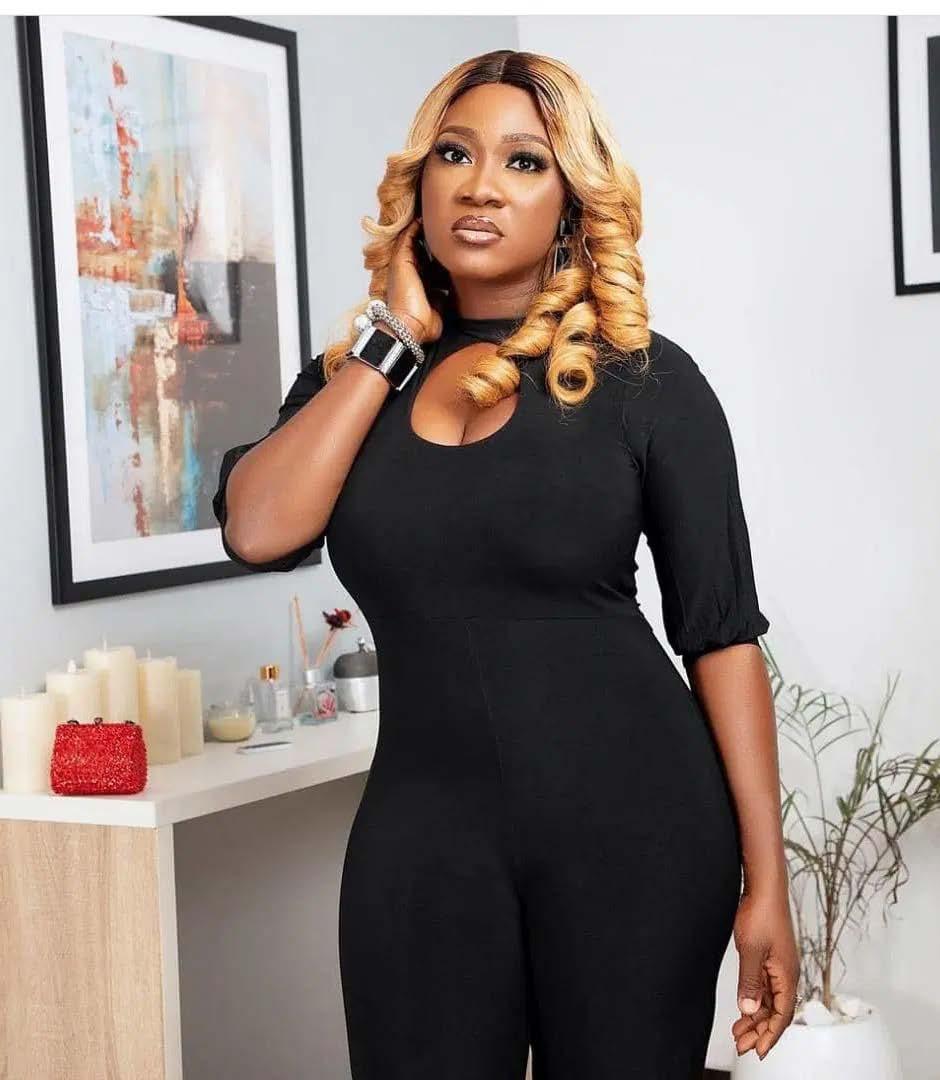
Mercy Johnson, August 28th

Basketmouth, September 14th

Inever liked Bolaji from the very first day he moved into the flat opposite mine. It wasn’t because he ever did anything wrong; in fact, he was always polite, always ready with a small smile or a wave. Still, for some reason, I just couldn’t stand him. Maybe it was the way he carried himself, too calm, too sure. Maybe it was because everyone seemed to like him. Four months later, my dislike had no solid explanation. He was fine, no doubt. Tall, broad shoulders, always dressed simply but neatly. I wasn’t exactly sure of what he did for work, though I heard him mention something about tech once. Whatever it was, it paid well enough; he was always at home during the day, yet never broke-looking.
We didn’t talk much until one afternoon when I locked myself out of my flat. I had been fanning myself and complaining loudly on the balcony when he offered to let me charge my phone and laptop in his flat. I hesitated at first, then followed him in. That small act was the beginning of a change I didn’t see coming.
From then on, little things pulled us closer. Sometimes we bumped into each other while buying suya at night and ended up walking back together. Other times, he’d knock on my door just to share food he cooked, or I’d bring him small chops after church on Sunday. Before long, weekends were not complete without us spending hours together. He’d order dinner for both of us, or I’d cook and carry plates across to his. I started realising that he wasn’t bad company at all. In fact, he was funny, attentive, and far from the annoying person I had painted him to be.
That Saturday started like any other. I was at his place, curled up on the sofa, watching his football team play. He was serious about it, shouting at the screen, pacing, and complaining about referees. I laughed at how worked up he got. When his team scored the winning goal, he jumped, shouting, and before I knew it, he pulled me into a hug. It should have been a normal hug, one of those casual, friendly ones. But it didn’t feel that way. His chest was firm against mine, his arms strong and warm around me. For a moment, neither of us moved. I looked up at him, and something shifted inside me.
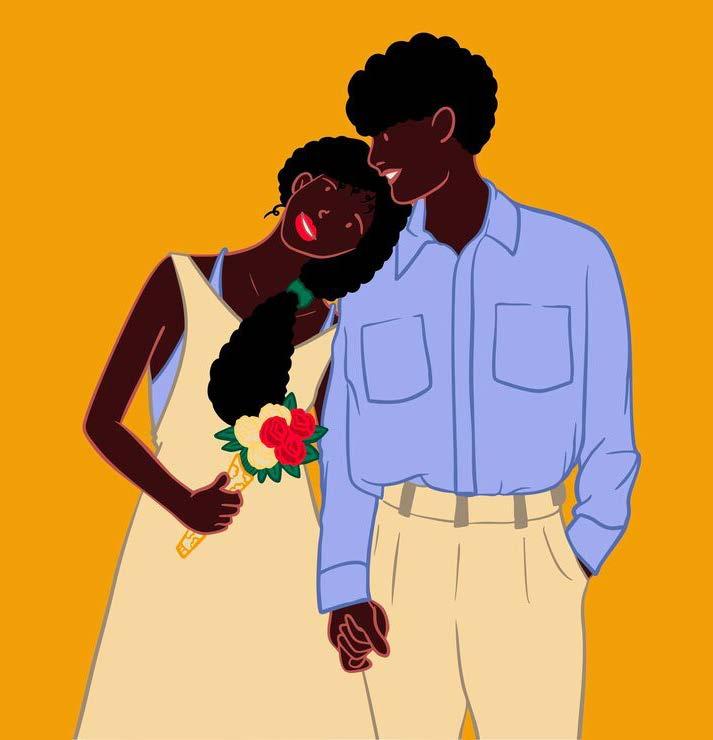
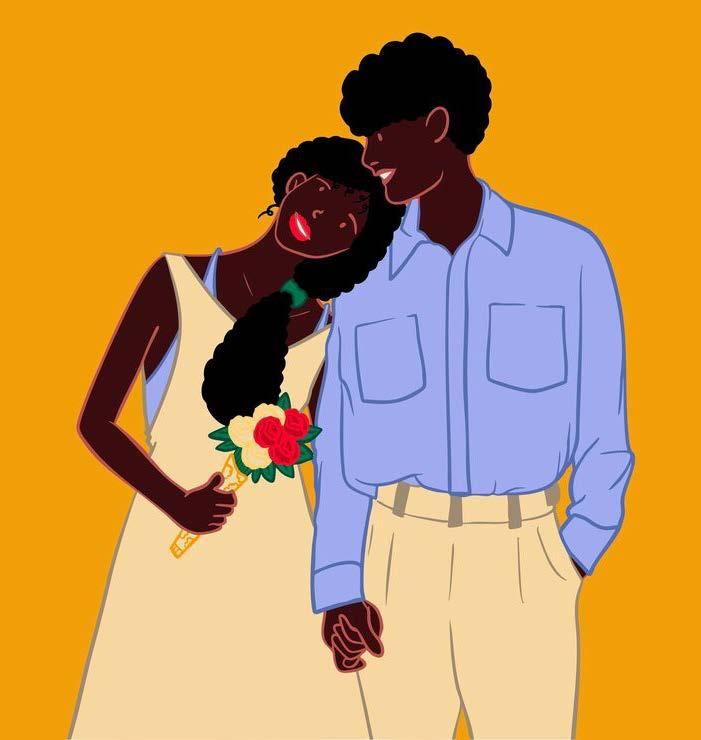
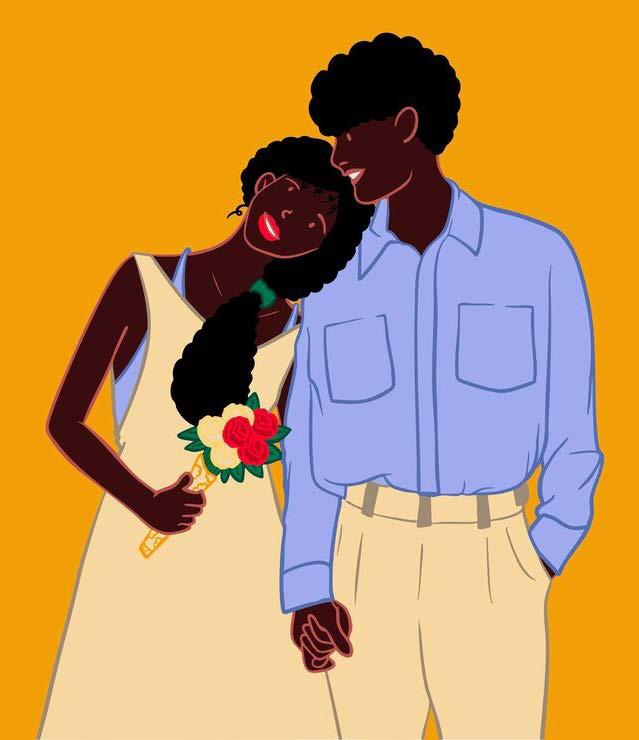
Without thinking, I leaned in and kissed him. Just once. My lips brushed his before I quickly pulled away, shocked at myself.
“I… I shouldn’t have,” I started, but before I could finish, he pulled me back gently and kissed me again. This time, longer. Deeper. My heart pounded as I melted into it, my arms finding their way around his neck. What followed felt like crossing a line we both knew we could never uncross. The air grew heavier, his touch lingered longer, and one thing led to another. We lost ourselves in the moment, letting the attraction we had both been pretending not to notice take full control. When it was finally quiet again, we lay side by
side, my hand resting in his. The room smelled of sweat and closeness, but I felt strangely calm. I turned to him, studying his face, and with a small laugh, I whispered, “You know I never really liked you when we first met.”
He smiled, squeezing my hand gently. “I know. But I was patient. I knew you’d come around.”
I rolled my eyes playfully, but deep down I knew he was right. Whatever this was between us, it had been waiting all along.
And in that moment, I didn’t regret a single thing.
BY BOLUWATIFE ADESINA
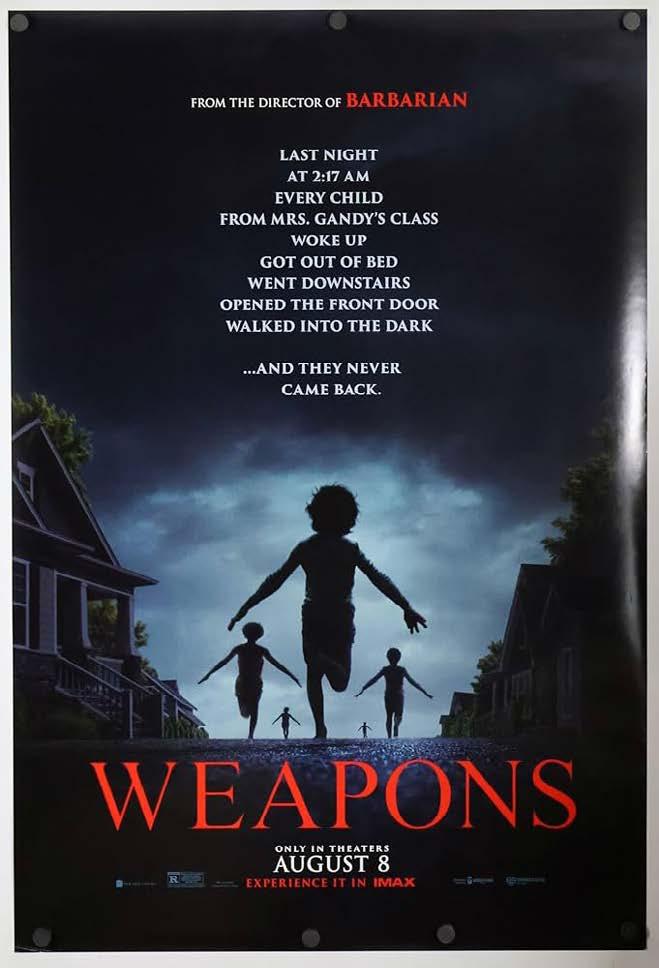
They’re
gone. Just like that, they disappeared into the night. At 2:17am. Seventeen kids from a third-grade class vanished like ghosts.
That premise in writer/director Zach Cregger’s affecting horror/thriller is a seed that he grows organically. Starting with that mystery, then unravelling what happens afterwards in a compelling way that grabs any viewer’s attention and holds it for 128 minutes until all is revealed. Wisely, methodically, like a supreme storyteller, Cregger reveals plot pieces in layers. Try as you will, you can’t guess the ending. Nor seemingly can any of the characters in this wicked tale.
All the students in Justine Gandy’s (Julie Garner, Netflix’s Ozark, Fantastic Four: First Steps) elementary school class have vanished. All except one. His name is Alex (Cary Christopher), and he doesn’t remember much, though many try to pry info out of him. Justine is stumped too. At a town meeting, parents express their deepest fears for their missing kids and some rage uncontrollably. A dad named Archer (Josh Brolin) points at the teacher. Like she’s a witch who’s cast a spell and stolen his child. Archer, screaming: “I don’t understand at all. Why just her classroom? Why only hers!?” Fortunately, the school principal, Marcus (Benedict Wong), calms the mob.
But who’s going to solve this case? Archer pressures the police, who seem baffled. Then he does his own digging. Though warned not to, Justine tracks Alex down and wants to interrogate him. Something weird is going on. Hard to put your finger on it. It’s like the whole town is caught in a trance over this case, and evil spirits are holding their emotions hostage and mocking them too. Folks are traumatised, scared and looking for clues.
Cregger could have relied on straightforward storytelling. Instead, what unfolds does so in a rather unique format. A sequence happens from one character’s perspective. Later, it’s repeated, but from
another character’s viewpoint. It’s like a game of telephone that goes forward only after it’s gone backwards. The script adds pivotal characters to this very captivating structure. Souls whose lives are intertwined: Justine’s ex, Paul (Alden Ehrenreich, Oppenheimer), a fairly stupid cop. James (Austin Abrams), a junkie who sees too much. Alex’s mom (Callie Schuttera) and dad (Whitmer Thomas). And a visiting Aunt Gladys (Amy Madigan, Field of Dreams). Piecing the story together is a challenge. A good challenge. One that will keep audiences mesmerised.
As a director, Cregger has a smooth, engaging style. His guidance helps the entire cast give natural performances. He’s got a nice feel for mood and movement. Knows how to build tension into an evolving mystery. Cregger works the audience’s nerves in both obvious and subtle ways. In his hands, surprisingly, restraint and dread make the footage more tense and compelling than wall-towall gore could ever do. By the time violence and slaughter rear their head, you’re so invested in and sensitive to the characters that any bloodletting feels exceedingly intense. It’s a style more similar to Alfred Hitchcock than John Carpenter. More psychological, less physical.
The filmmaker is aided greatly by cinematographer Larkin Seiple’s inobtrusive cinematography. His judicious camerawork goes indoors and outdoors seamlessly. Night shots under street lights, classrooms, sundrenched front lawns. He makes it all look like we’re watching middle America in crisis, up close. The biggest compliment anyone can give a production designer is saying, “I can’t tell whether the footage was shot in a studio or in real locations.”
The musical score is creepy in all the right places. Credit Ryan Holladay, Hays Holladay and Zach Cregger for knowing when to go light with the piano music. When to go heavy with thundering drums. Fray the nerves. Add some fright. Accentuate the gory scenes with jarring sounds. They get it just right. As does editor Joe Murphy, who makes every single second of the film accountable for conveying emotions, vital plot twists, revelations, rivalries, demonic rituals and a fight for answers that never abates. No fat. All lean scenes.
The entire cast makes the characters on the page rise above any preconceived notions. The dynamics between Justine and Archer, as played by Garner and Brolin, go from warring humans to disparate souls on the same mission. That’s because the two actors don’t overplay their hands as two determined protagonists, not sure of what’s happening around them or to them. Paul and James are the opposite kind of characters. Ehrenreich and Abrams portray the two men with overtly animated performances. Dim-witted cop. Dim-witted junkie. Tied together by bad decisions and bad luck. The characterisations are perfect. However, not as perfect as Madigan’s interpretation of Aunt Gladys. The veteran, Oscarnominated actor knows how to get the most out of a scene. Close-ups of her face as she rages will be etched in viewers’ minds for a lifetime.
Beware when kids disappear. You never know where their vanishings will lead. And that’s the strength of this excellently written, directed, filmed, acted and produced horror thriller. You never know until the script is ready to tell you what the hell just happened.
Rating:9.5/10
Incredible

Scan this with your camera or click to access the playlist (Youtube Music)

Scan this with your camera or click to access the playlist (Spotify)
Showtime’s Dexter enjoyed several rich seasons before bleeding out slowly in a final run that crawled toward an unsatisfying conclusion. Dexter Morgan (Michael C. Hall) was dredged up, eight years later, for Dexter: New Blood, which traded bloody beachside fun for a grim, cold adventure without much of a pulse. Despite the fact that New Blood’s finale saw him shot at close range with a hunting rifle right in the chest, Dexter just won’t die.
Dexter: Resurrection begins by hurriedly explaining how Dexter has evaded both death and the murder charges he was facing at the end of New Blood. The answers given are all implausible—apparently getting shot in the heart isn’t too big a deal so long as it’s cold out—but they’re functional enough, allowing the series to quickly get Dexter back on his feet.
While Dexter is recovering, his physical therapist makes an offhand remark about a grisly murder that took place in New York City, inadvertently tipping him off to the whereabouts of his son Harrison (Jack Alcott), whom we last saw tearfully gunning his father down. It’s an extraordinarily lazy bit of plotting, up there with the cop in New Blood figuring out Dexter’s true identity after randomly bumping into one of his old Miami P.D. colleagues at a conference in New York, but it gives Dexter a mission and a new hunting ground to explore.
Dexter is barely in New York for five minutes when he crosses paths with the Dark Passenger, a serial killer who targets rideshare drivers. Ignoring the faintly ludicrous fact that Dexter decides to go after this backseat butcher because he’s mad about having his nickname stolen, the Dark Passenger fits perfectly into the original show’s gallery of rogues. The idea of a rideshare killer has the hint of an urban legend to it, taking the reasonable fear of how readily we get into cars with strangers and making it real in the form of an outlandish bogeyman. With the Dark Passenger in

his sights, Dexter slips back into his old routine—stalking his target, setting up shrink wrap-covered kill rooms, and so on—and Resurrection starts to feel a lot like the original show. There’s still a dark thrill to watching Dexter work, accompanied by Hall’s sardonic inner monologue, and the series has a knack for throwing unexpected problems in his path and finding clever ways for him to solve them.
Where New Blood’s dour narrative got bogged down in Dexter’s guilt and regret, Resurrection gets him back in action and gleefully leans into the pulpier side of his tale by introducing Uma Thurman’s Charley. Her story is seeded carefully through the first few episodes, and she’s a woman of few words. But we soon come to understand that she’s out to recruit serial killers into some sort of secret organisation. The series itself has recruited an impressive cast of stars to play this deadly bunch, some of whom are playing heavily
against type while others are leaning into a psychopathic shtick that we’ve seen before. I With all the excitement Dexter encounters in New York, it’s easy to forget why he went there in the first place: to find Harrison. In truth, this part of the series is actually better forgotten. It’s no fault of Alcott’s, who gives a reasonably charming performance, but Harrison is a much less interesting figure than his father. He lacks specificity—the way that Dexter is both a bowlingloving, pancake-making dad and a ruthless, blood-crazed killer. There’s an intensity and an awkwardness that make both sides of Dexter’s persona equally entertaining, while Harrison is just a normal kid who occasionally bludgeons someone with a cistern lid. It doesn’t help that Harrison’s own adversary is a lot less compelling than the killers Dexter gets to cross scalpels with. Harrison is being chased down by Detective Claudette Wallace (Kadia Saraf), who compensates for her lack of social skills and emotional intelligence with savant-like investigative abilities.
Since Harrison’s return in New Blood, Dexter has gone back and forth over whether he wants to see his son follow in his footsteps. Regardless, Resurrection does little to suggest that the young man is up to the task. Fortunately, not only is the Bay Harbour Butcher proving to be extremely hard to kill, but it turns out there’s plenty of life left in him too.


